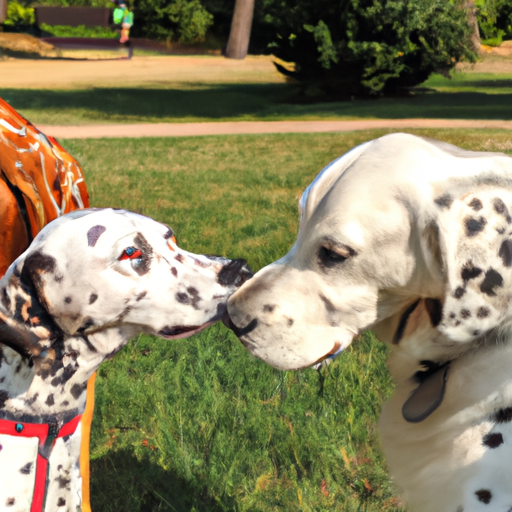Introduction
Firstly, take a moment to congratulate yourself on your new addition! Welcoming a new dog into your home is an exciting venture. However, it’s crucial to understand that the initial introduction between your resident dog and the newcomer can set the tone for their future relationship. This guide will walk you through, step by step, on how to make this introduction as smooth as possible.
H2: Preparing for the Introduction
Before the two canines meet, there are several steps you should take to ensure a smooth introduction:
-
Understand Their Temperaments: Every dog has a unique personality. Some might be more social and outgoing, while others might be shy or nervous. Understanding the temperaments of both dogs can help you predict their reactions and plan accordingly.
Dog’s Temperament Likely Reaction Social Excited, playful Shy Nervous, hesitant Aggressive hostile, defensive -
Create a Neutral Environment: Ideally, the first meeting should take place in a neutral location. This can prevent any territorial behavior from your resident dog.
-
Have Helpers on Hand: It’s beneficial to have another person present to help manage the dogs. This way, each dog has a dedicated handler.
H2: The Initial Introduction
The first meeting is a pivotal moment. Approach it with care, patience, and the following steps:
-
Keep Both Dogs on Leashes: This allows you to control their movements and can prevent any sudden, aggressive behavior.
-
Allow Sniffing: Sniffing is a natural way for dogs to get to know each other. Let them sniff each other, but keep the leashes loose to avoid tension.
-
Watch for Body Language: Positive signs include relaxed bodies, wagging tails, and playful bowing. If you notice growling, stiff bodies, or hard stares, it’s best to calmly separate them and try again later.
H2: Settling In at Home
Once the initial introduction goes well, it’s time to bring the new dog home. Here’s how to ease the transition:
-
Maintain Separate Spaces: Initially, give each dog their own space. This can reduce conflict over resources and give them a safe space to retreat to.
-
Gradual Integration: Slowly allow them to spend more time together under supervision.
-
Positive Reinforcement: Reward both dogs for calm, friendly behavior towards each other.
H2: Potential Challenges
Even with the best preparations, you might face some challenges. Common issues include jealousy, resource guarding, and fighting. In this case:
- Seek advice from a professional dog behaviorist.
- Keep interactions short and supervised until the behavior improves.
- Try not to favor one dog over the other as it can breed resentment.
Frequently Asked Questions
Q1: What if my resident dog acts aggressively?
A1: If aggression continues despite your efforts, it’s best to consult with a professional dog behaviorist.
Q2: How long does it take for dogs to get used to each other?
A2: This varies widely. Some dogs may become friends immediately, while others may take weeks or even months to fully accept each other.
Q3: Can I leave the dogs alone together?
A3: Not until they’ve consistently shown peaceful, friendly behavior towards each other.
Remember, patience and understanding are key during this process. With time, your dogs can learn to accept, and even love, each other.



